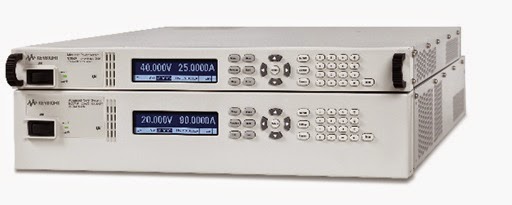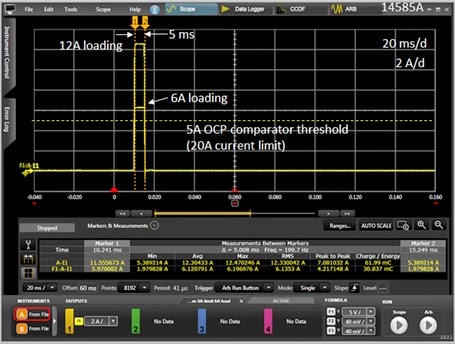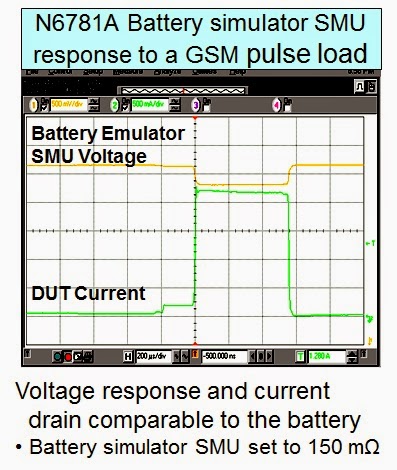As I do quite a bit of work with mobile battery powered
devices I regularly post articles here on our “Watt’s Up?” blog about aspects
on testing and optimizing battery life for these devices. As a matter of fact
my posting from two weeks ago is about the webcast I will be doing this
Thursday, June 18th: “Optimizing Battery Run and Charge Times of Today’s Mobile Wireless Devices”. That’s just
two days away now!
With
battery powered devices there are times it makes sense to use the device’s
actual battery when performing testing and evaluation work to validate and gain
insights on optimizing performance. In particular you will use the battery when
performing a battery run-down test, to validate run-time. Providing you have a
suitable test setup you can learn quite a few useful things beyond run-time
that will give insights on how to better optimize your device’s performance and
run-time. I go into a number of details about this in a previous posting of
mine: “Zero-burden ammeter improves battery run-down and charge management testing of battery-powered devices”. If you are performing this kind of work
you should find this posting useful.
However, there are other times when it makes sense to use
a power supply in place of the device’s battery, to power up the device for the
purpose of performing additional types of testing and evaluation work for
optimizing the device’s performance. One major factor for this is the power
supply can be directly set to specific levels which remain fixed for the
desired duration. It eliminates the variability and difficulties of trying to
do likewise with a battery, if at all possible. In most all instances it is
important that the power supply provides the correct characteristics to
properly emulate the battery. This includes:
- Full two-quadrant operation for sourcing and sinking current and power
- Programmable series resistance to simulate the battery’s ESR
These characteristics are depicted in the V-I graph in
figure 1.
Figure 1: Battery emulator power supply output characteristics
Note that quadrant 1 operation is emulating when the
battery is providing power to the device while quadrant 2 is emulating when the
battery is being charge by the device.
A colleague here very recently had an article published that
goes into a number of excellent reasons why and when it is advantageous to use
a power supply in place of trying to use the actual battery, “Simulating a Battery with a Power Supply Reaps Benefits”. I believe you will find this to
also be a useful reference.























